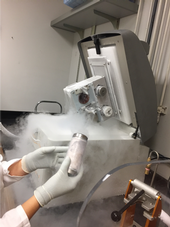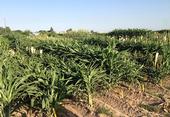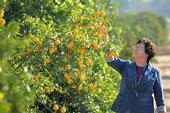- Author: Kara Menke, kjmanke@berkeley.edu

Scorching temperatures and parched earth are no match for the sorghum plant — this cereal crop, native to Africa, will remain green and productive, even under conditions that would render other plants brown, brittle and barren.
A new study published this week in the journal Proceedings of the National Academy of Sciences provides the first detailed look at how the plant exercises exquisite control over its genome — switching some genes on and some genes off at the first sign of water scarcity, and again when water returns — to survive when its surroundings turn harsh and arid.
“With this research, we are laying the...
- Author: Jeannette E. Warnert

As sorghum plants cope with drought conditions, the plants' roots and adjoining microbial communities are communicating in a chemical language that appears to improve the plants' chances under water stress.
“It's amazing,” said Peggy Lemaux, UC Cooperative Extension specialist. “We know there are lots of microbes in the soil and, for the most part, ones in the surrounding soil stayed the same under drought conditions. We only saw changes in those microbes closely associated with the roots.”
The role of drought in restructuring the root microbiome was the first published discovery to come out of a sweeping drought research project underway since 2015...
- Author: Jeannette E. Warnert

California citrus farmers have their ears perked for all news related to Asian citrus psyllid (ACP) and huanglongbing (HLB) disease, but the very latest advances have been available only in highly technical research journals, often by subscription only.
UC Cooperative Extension scientists are now translating the high science into readable summaries and posting them on a new website called Science for Citrus Health to inform farmers, the media and interested members of the public.
“The future of the California citrus depends on scientists finding a solution to this pest and disease before they destroy the industry,” said



